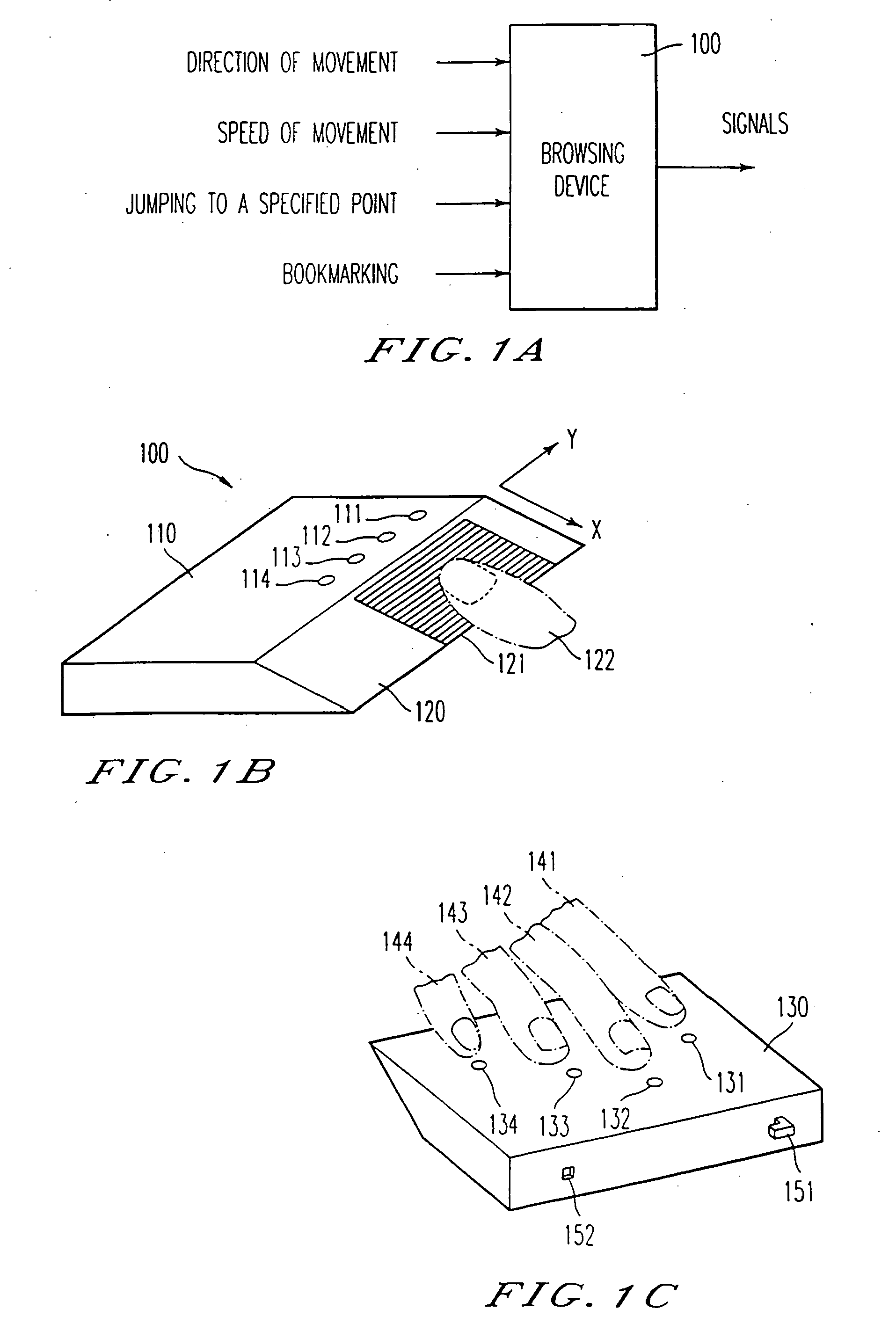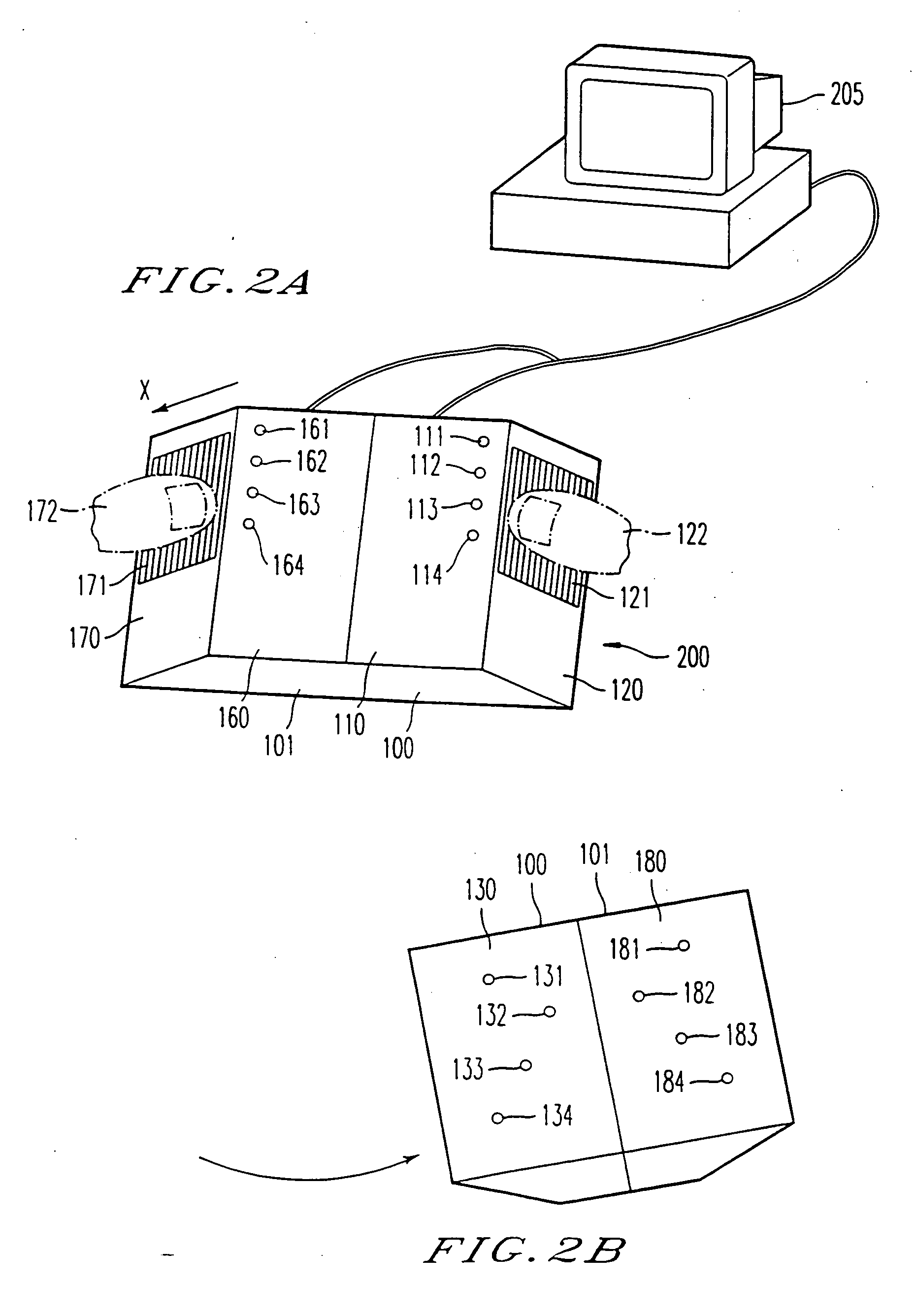Computer based browsing computer program product, system and method
a computer program and document technology, applied in the direction of instruments, electric digital data processing, cathode-ray tube indicators, etc., can solve the problems of low user experience, subtle and complicated process of book browsing, and most people's inability to find this way a particularly convenient way, etc., to maximize browsing ease, easy to be attached to existing computer systems, and low cost
- Summary
- Abstract
- Description
- Claims
- Application Information
AI Technical Summary
Benefits of technology
Problems solved by technology
Method used
Image
Examples
Embodiment Construction
[0099] Referring now to the drawings, wherein like reference numerals designate identical or corresponding parts throughout the several views, and more particularly to FIG. 1A thereof which depicts the browsing device 100 according to the present invention that can be used in conjunction with existing computer systems for the purpose of browsing through documents or any information stored in the computer. While certain embodiments of the browsing device (e.g., device 100) are shown herein, other data input devices, such as keyboards, keypads, a computer mouse used with pull-down menus, etc., may be used as well to accomplish the browsing functions, albeit in a less convenient format. Nevertheless, in reference to the browsing device 100, four commands are input and detected by the browsing device 100. These commands include the following: (a) specifying whether a movement in a forward direction or in a backward direction through the document is to be performed; (b) specifying a spee...
PUM
 Login to View More
Login to View More Abstract
Description
Claims
Application Information
 Login to View More
Login to View More - R&D
- Intellectual Property
- Life Sciences
- Materials
- Tech Scout
- Unparalleled Data Quality
- Higher Quality Content
- 60% Fewer Hallucinations
Browse by: Latest US Patents, China's latest patents, Technical Efficacy Thesaurus, Application Domain, Technology Topic, Popular Technical Reports.
© 2025 PatSnap. All rights reserved.Legal|Privacy policy|Modern Slavery Act Transparency Statement|Sitemap|About US| Contact US: help@patsnap.com



